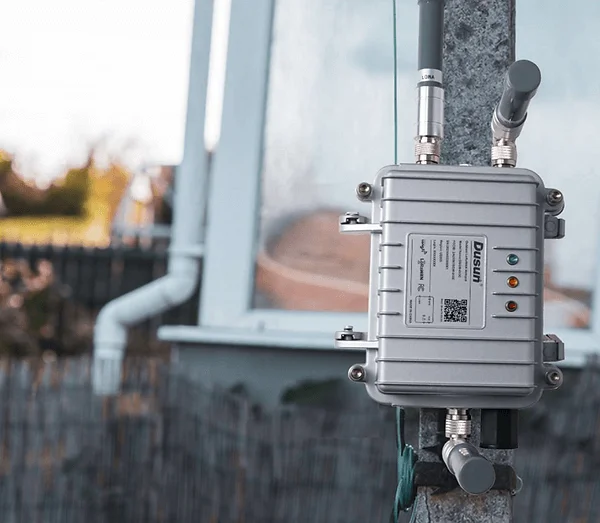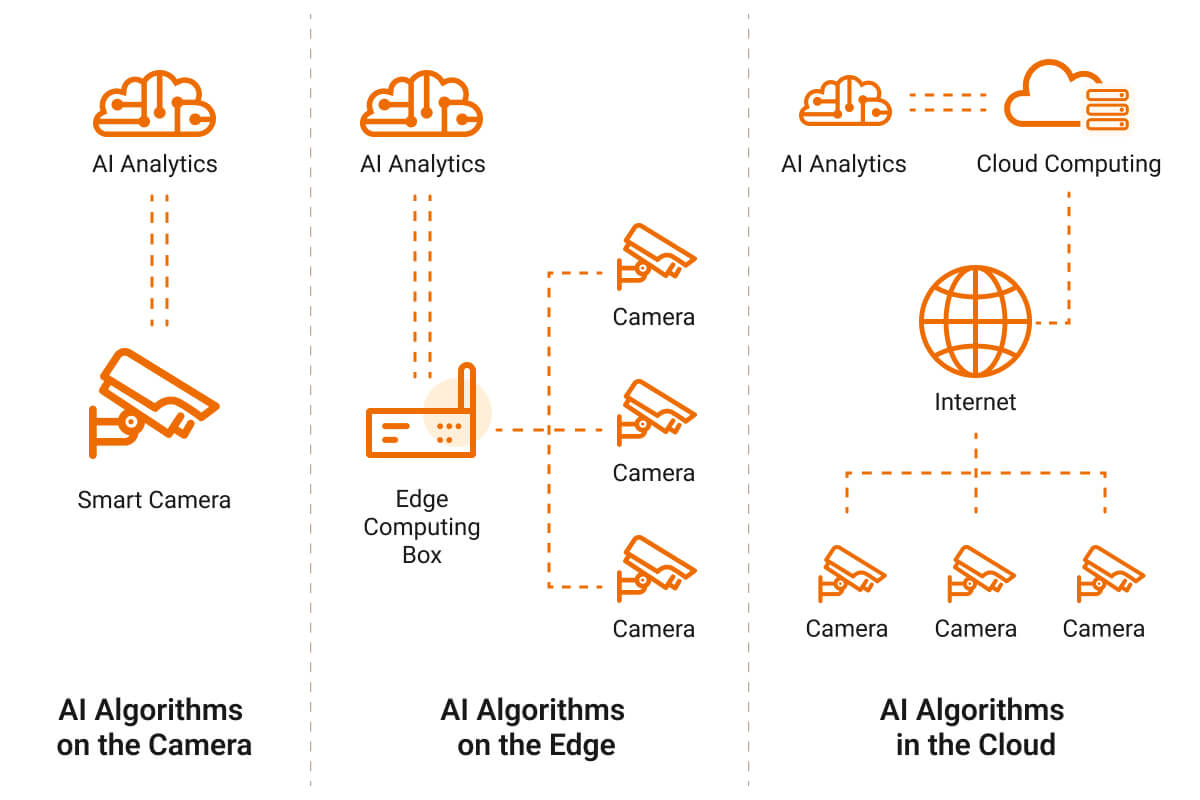Water management is becoming more challenging by the day because of factors like scarcity, natural disasters, high energy costs, and aging infrastructure. These challenges lead to revenue losses on the utility company’s side, while customers get frequent outages, poor water quality, and high bills.
LoRaWAN networks can help to manage water resources by providing real-time consumption insights, detecting leakages via sensors, and optimizing maintenance schedules, which reduces operational costs and improves efficiency in water supply and management. Let’s analyze how LoRaWAN solves these water management challenges in detail below.
Challenges Faced in Water Management
Floods
Floods can wreak havoc on water management infrastructure, destroying sewer lines and causing environmentally harmful leakages, especially in rivers and other water bodies.
LoRaWAN infrastructure can monitor river levels at various locations and send alerts if the water is too high. The same infrastructure can monitor and detect anomalies in the sewerage distribution system to divert, block, or stop wastewater pumping if a disaster is imminent.

Water Scarcity
As desertification intensifies and the global population increases, water scarcity is becoming a thorny issue that will only get worse if water utility companies don’t cut down on wastage. LoRaWAN sensors can be used to detect water leaks, water flow monitoring and water quality monitoring and lorawan gateways are responsible for receiving data from LoRaWAN devices and transmitting it to a central server. LoRaWAN solution provides a cost-effective, long-range, and wide-area monitoring system for water levels, flow rates, and quality to combat water scarcity challenges. This can help to prevent water loss and save money.
Leakages
Leakages are the biggest source of clean water wastage. But sewer lines can also leak, and LoRaWAN solution can help identify these issues as soon as they happen and alert utility companies to fix them immediately.
High Power Costs
Pumping stations consume a lot of energy, consuming up to 60% of the life-cycle cost of water utility companies. By cutting down on leakages and introducing efficiencies in the water supply system, LoRaWAN solution can reduce the required pumping, which will lower power costs and leave more revenue to finance other functions.
Lack of Project Financing
Most poor countries lack enough resources to fund water-related projects, leaving financial institutions and investors as the only options. Banks and other lenders might refuse to finance inefficient water projects because they won’t get their money back. But including a LoRaWAN solution in the project makes it more viable because it will operate more efficiently and generate more revenue.
Poor Water Quality
Undetected leakages along clean water supply lines can affect the water quality reaching consumers. Wastewater leakages also make water bodies like rivers dirty, resulting in the killing of aquatic life and contaminating irrigated food crops and drinking water.
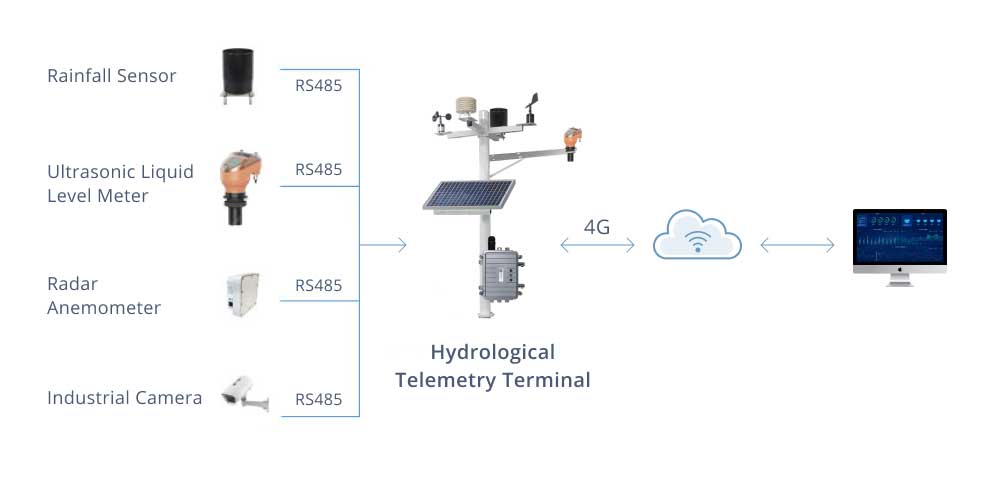
Aging Infrastructure
Mature markets in North America and Europe have an aging infrastructure problem because they installed water and sewer lines several decades ago. In new installations, LoRaWAN IoT uses the acquired data to predict maintenance and alert technicians to fix sections only when necessary. This helps to cut costs.
Expensive Maintenance
Sewage pumping stations can have exorbitant maintenance costs if the pumps block, overheat, and fail due to debris and trash. But a LoRaWAN solution that monitors the pump’s vibrations can help with preventive maintenance, sending alerts when the vibrations exceed a certain threshold to prevent costly damages.
Typical LoRaWAN Water Management Solution and How It Solves These Challenges
After knowing its working principle, it is necessary to know the components of a typical LoRaWAN-enabled water quality monitoring system.
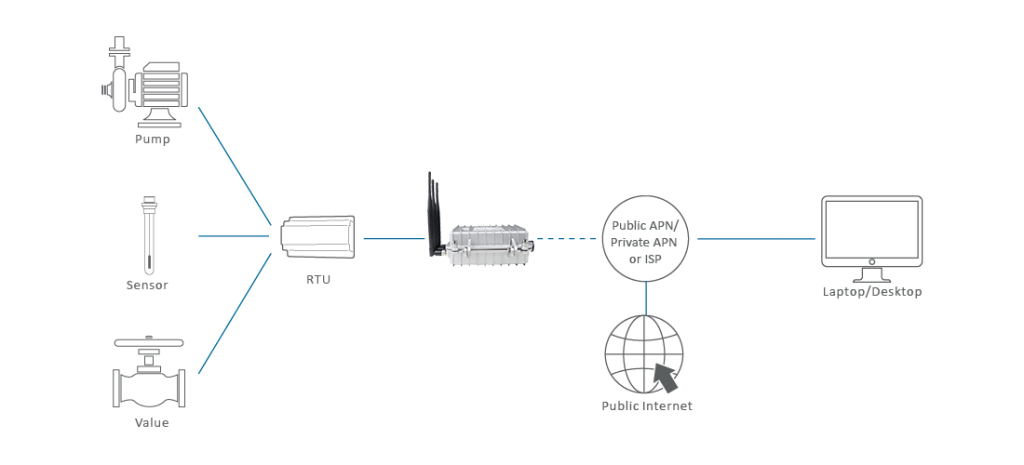
Solution Hardware Components
LoRa Water Meter
These meters measure the water flow rate, level, quality, and temperature.
LoRa Pressure Sensor
Pressure sensors can be independent devices or be part of the smart water meter. Their purpose is to measure the water pressure.
LoRa Smart Valve
A smart valve is an actuator that closes the water supply if there are issues like leakages.
LoRa Vibration Sensors
These sensors are ideal for pumping stations (for clean or wastewater) to trigger alerts if the machines vibrate excessively.
LoRa Ultrasonic Sensors
Ultrasonic sensors help to detect and monitor the water level in rivers in flooding-prone areas.
LoRaWAN Gateway
These hubs form the LoRaWAN network and collect/aggregate data from all sensors, then upload data to the cloud. They also forward control instructions to actuators in the system, such as smart valves, to close off water flow.
I recommend the DSGW-014 outdoor LoRaWAN gateway for this task because it is a waterproof hub with an IP66 rating, so you can install it in the field to connect to and capture data from the end nodes in the water supply lines.
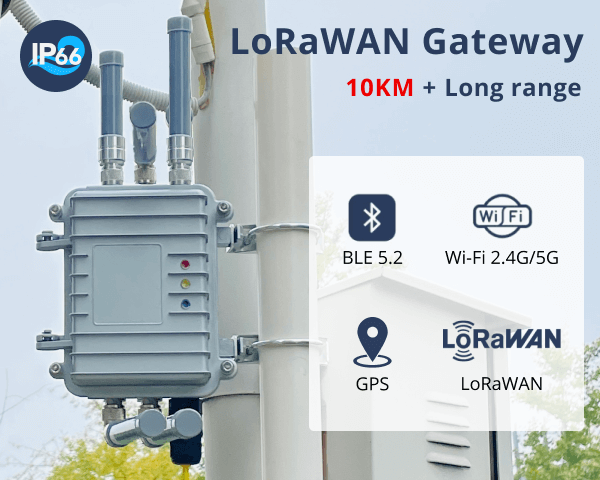
The gateway has a range of up to 10 miles and can support up to 1,000 end nodes while receiving data from a maximum of 8 devices simultaneously. Therefore, it can handle multiple sensors, water meters, and valves in large neighborhoods, and also link to ultrasonic sensors installed on nearby rivers to monitor the water level in flood-prone areas.
On the analytics part, this hub features built-in integration with various LoRaWAN network servers, including Things Stack, Chirpstack, AWS IoT Core, and LORIOT to reduce the deployment time.
Maintenance-wise, the gateway supports remote OTA, so you don’t have to access each hub in the network physically to install software updates over their operational lifespan.
Solar Panels
LoRaWAN end nodes can run for years on battery power. However, LoRaWAN gateways are more power-hungry, and I recommend powering them using solar to reduce maintenance tasks and costs. You can buy a small solar and battery pack combo for each hub that is mounted on a pole, telecommunication tower, or high place outdoors.
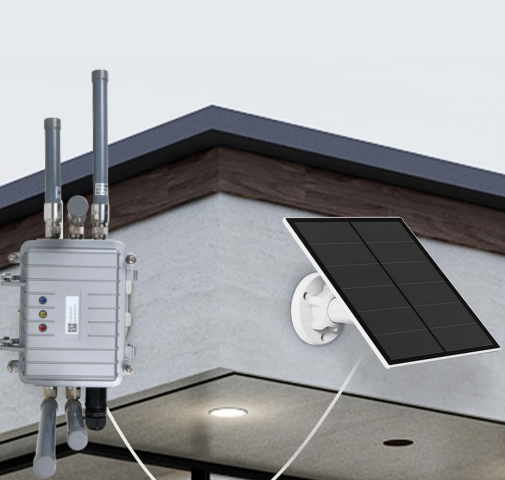
We can provide LoRaWAN gateways integrated with the solar panel to make it easier to deploy the water management solution. Contact us for more details.
How To Setup LoRaWAN Water Supply Management Solution
Let’s focus on the clean water supply aspect of water management because it is the most common. Here’s how to set up this IoT solution.
- Select the Most Suitable Hardware
Each LoRaWAN IoT water management solution has specific requirements that demand different hardware specifications. The smart meters, valves, and sensors can be standard, but the gateway and solar/battery size requirements can differ. But the DSGW-014 outdoor LoRaWAN gateway fits most water management solutions because it is a versatile unit, so it’s worth checking out. Reach out to us if you need help determining the most suitable hardware. We are here to help.
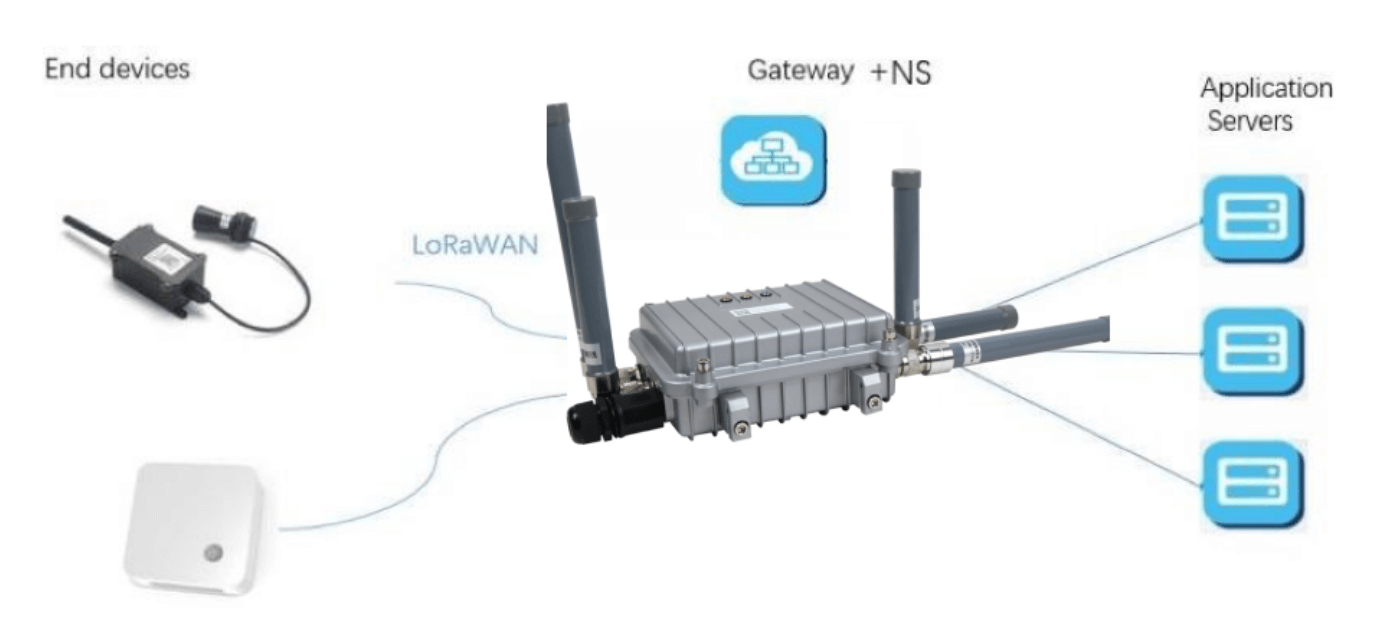
- Deploy the Gateways Strategically
Depending on the end-node locations, deploy the gateways strategically to connect as many of them as possible within the coverage range and with the optimal signal strength.
- Setup the Cloud for Analytics and Visualization
Set up the network server connection to any platform of your choice for data analytics and visualization. With our LoRaWAN gateway, you get built-in integration with Things Stack, Chirpstack, AWS IoT Core, and LORIOT to simplify this setup process.
- Implement a Leak-Detection System to Help With Predictive Maintenance
Build a leak-detection system that monitors the water flow rate and pressure continuously. This system can incorporate a predictive maintenance sub-system that enables utility companies to schedule maintenance only when necessary to reduce costs.
- Automate Tasks Like Valve Closing Based on Pressure Sensor Data
If using edge computing gateways, build applications for task automation, such as valve closing if leaks are detected. This is important because it ensures the system manages the water system effectively even if the WAN goes down.
- Automate Alerts and Notifications
In addition to the task automation system, automate alerts and notifications via email, SMS, and mobile apps to the relevant utility company personnel when sensors detect anomalies.
- Enable Remote End Node Firmware and Configuration Updates
Ensure the end nodes can be configured and updated remotely to simplify maintenance over their operational lifespan.
- Implement Security Measures
Secure the local LoRAWAN network and the cloud connection using various security measures, such as encryption and authentication. LoRaWAN is a highly secure protocol, but you can include additional security measures to boost system security. Additionally, you can schedule regular security audits once the solution is in use to ensure the water management solution’s sensitive data is secure with no unauthorized access.
- Integrate the Solution With Existing Systems
Integrate the solution with the existing utility company systems, such as billing, CRM, SCADA, and asset management to exchange the relevant data, provide better control, and generate more accurate analytics.
Characteristics of LoRaWAN That Make It Ideal for Water Management
- Vertical Scalability: Water management needs multiple end nodes, and LoRaWAN can accommodate hundreds of end nodes with proper network planning and optimization.
- Wide Coverage Range: With smart meters, sensors, and valves spread out across vast plumbing networks, a single LoRaWAN can cover a 15+ km radius, which reduces the infrastructure cost of deploying the network.
- Secure Protocol: LoRaWAN is one of the few IoT networks that implements end-to-end encryption. Additionally, its MAC and application messaging are origin authenticated, replay protected, integrity protected, and encrypted. You can also build a public or private LoRaWAN, but I recommend deploying the latter because it is more secure.
- Low Battery Consumption: The batteries that power LoRa end nodes last for years, which reduces maintenance tasks and costs.
- Simple, Low-Cost Installation: LoRaWAN operates in the ISM band, a free radio frequency spectrum with no legal restrictions. Since it’s free, it reduces the deployment costs significantly in a private network.
Conclusion
As you can see, LoRaWAN is the most practical solution to consider for water management because it solves several challenges, especially the emerging ones related to climate change. However, the solution needs high-performing hardware to ensure reliability.
Since the hub is the most important piece of this puzzle, I highly recommend the DSGW-014 outdoor LoRaWAN gateway for water management solutions. It supports RU864, IN865, EU868, US915, AU915, KR920, and AS923 LoRa frequency bands, so you can deploy it to any region globally.
Dusun IoT provides comprehensive, rigorously tested development resources, ensuring high reliability and efficiency. Our expert FAE team offers personalized one-on-one support for partners addressing technical challenges during IoT gateway secondary development, accelerating time-to-market and gaining a competitive edge.
If you need more information about this product or how to set up your water management solution, our team is available to provide technical advice. Reach out to us to get started.
FAQs
How Does LoRaWAN Help To Monitor River Water Quality?
LoRaWAN helps to monitor river water quality by incorporating sensors in the network to measure parameters like pH, dissolved oxygen, temperature, the presence of various chemicals, and the existence of microorganisms.
What Is Smart Watering/Irrigation Using LoRaWAN?
A smart watering or irrigation system uses soil moisture data to determine the irrigation requirements for each farm section. I can also incorporate weather data to predict the irrigation needs, which can reduce water consumption if rains are on the way.
How Do Smart Water Meters Work in LoRaWAN IoT Networks?
Smart water meters use technologies like electromagnetic or ultrasonic sensing to capture the water flow rate accurately and microcontrollers to convert the analog data into digital format before transmitting it across LoRaWAN to the gateway.









